🔨 We want to provide the best experience, so we're constantly fixing up the Verosint application.
We fixed a bug that prevented you from pulling up the Event Details side panel for any event older than 30 days in Explorer. Onwards and upwards!
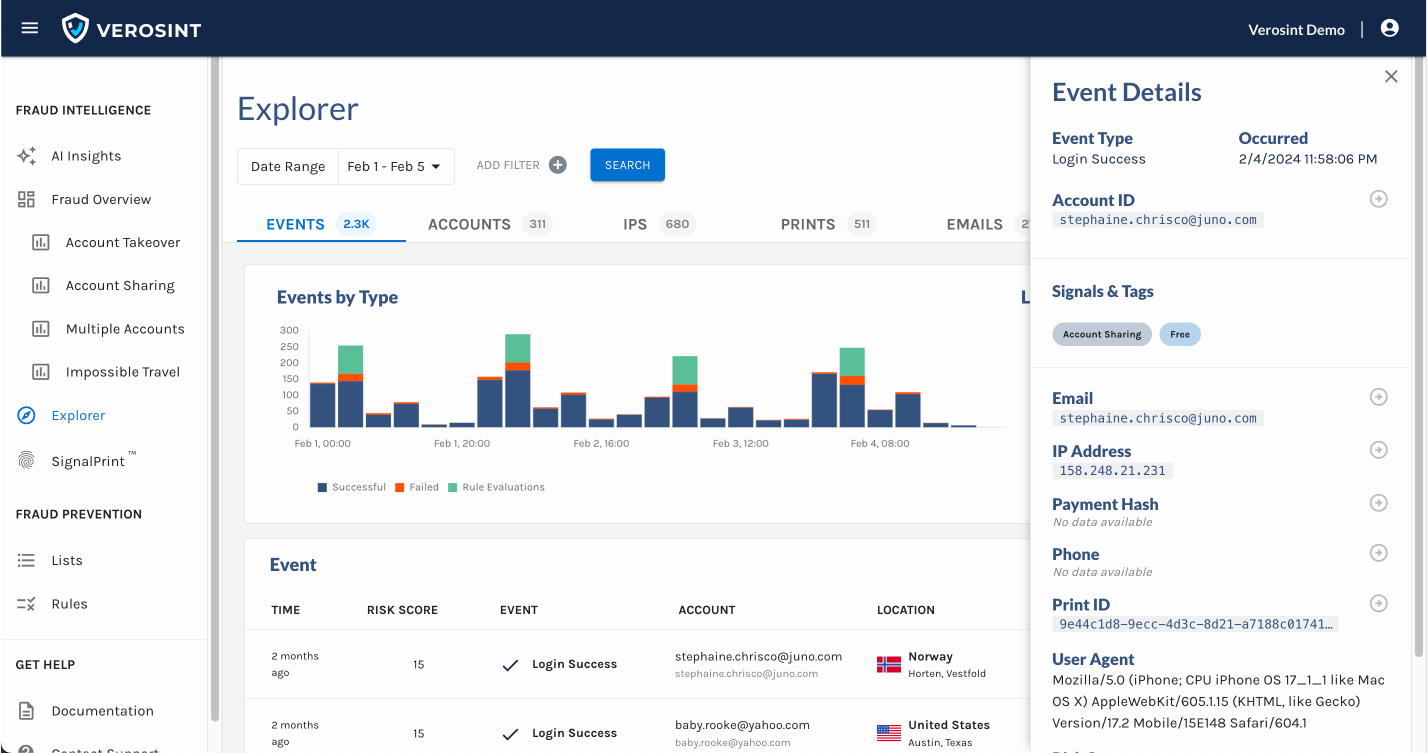
🔨 We want to provide the best experience, so we're constantly fixing up the Verosint application.
We fixed a bug that prevented you from pulling up the Event Details side panel for any event older than 30 days in Explorer. Onwards and upwards!

🔔New feature alert!

Archive insights to focus on the ones you care about!
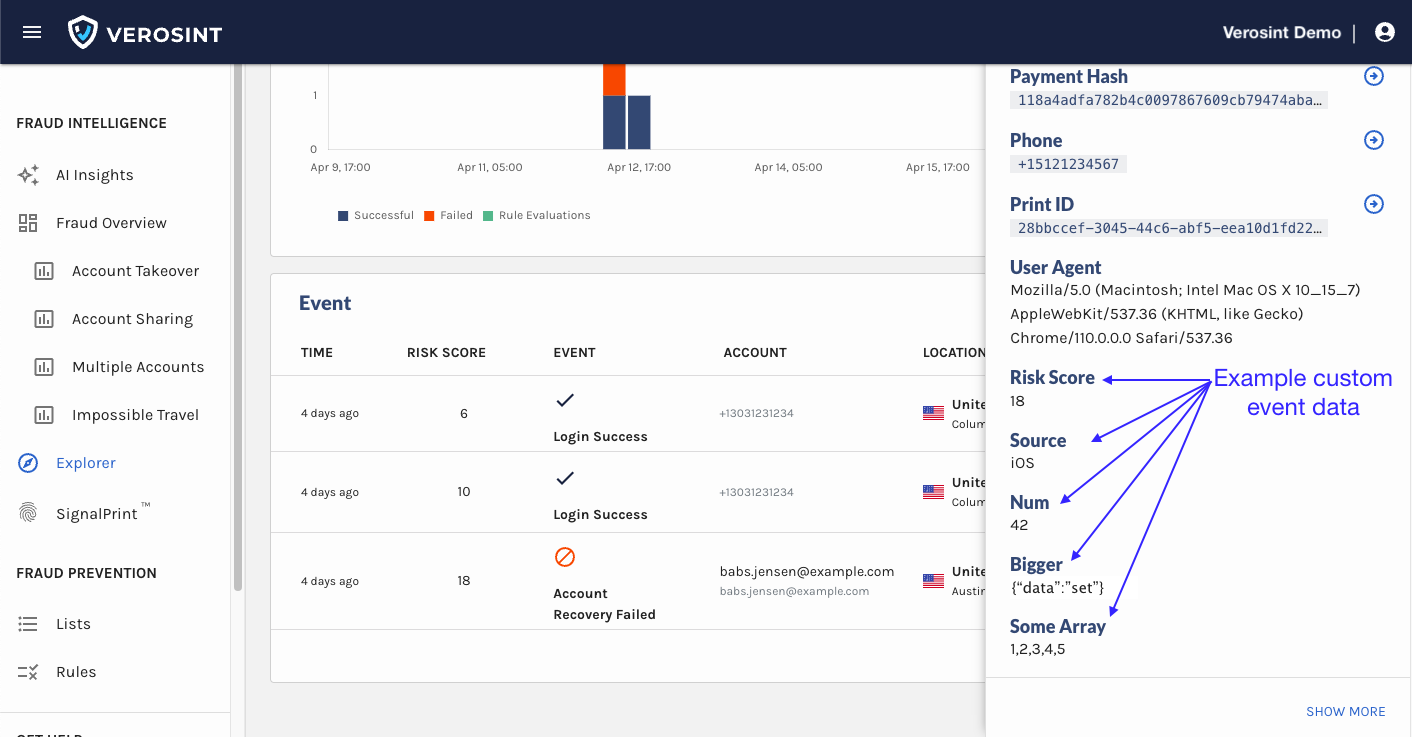
Examples of custom event data you can send and see in the Event Details side panel in Explorer
🔔 New feature alert! You now have an email.relay signal, which identifies if an email address is forwarded to another email address. We detect and label email address from Apple iCloud+, Hide My Email, Firefox Relay, DuckDuckGo, addy.io, Fastmail, and SimpleLogin.
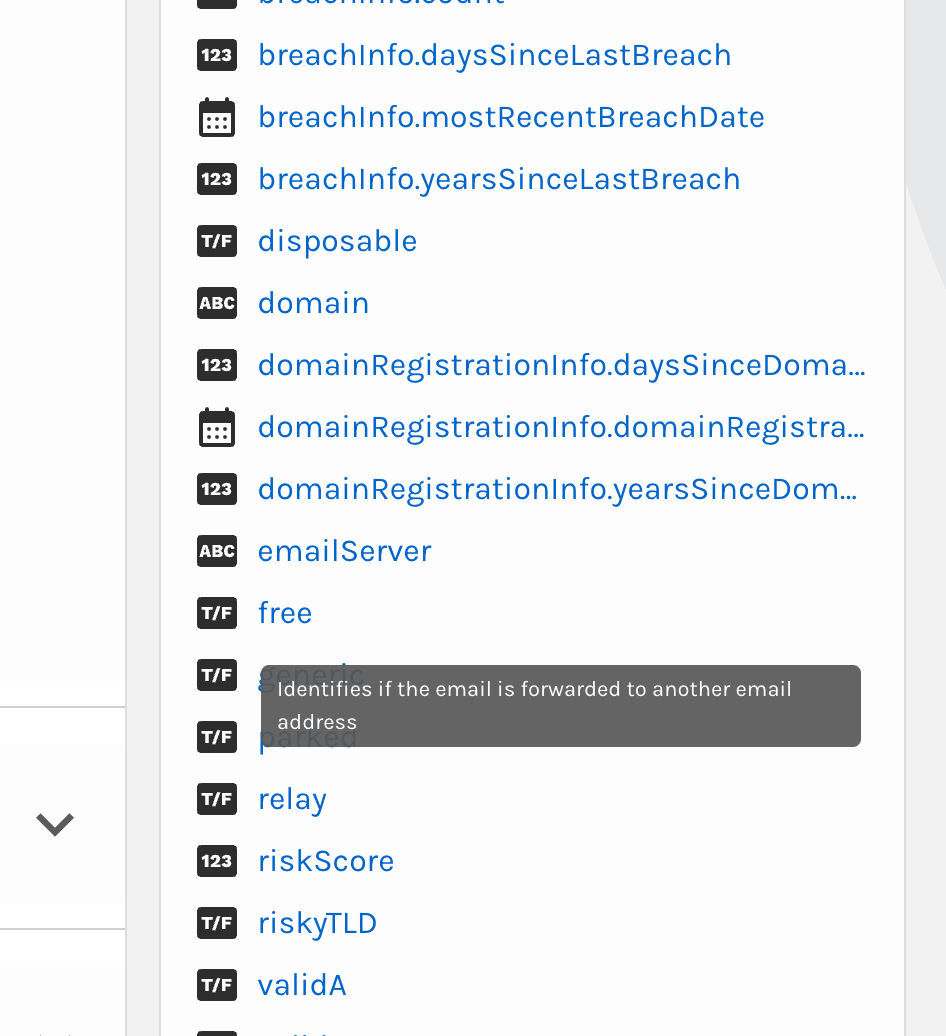
Email.relay signal in Rules UI
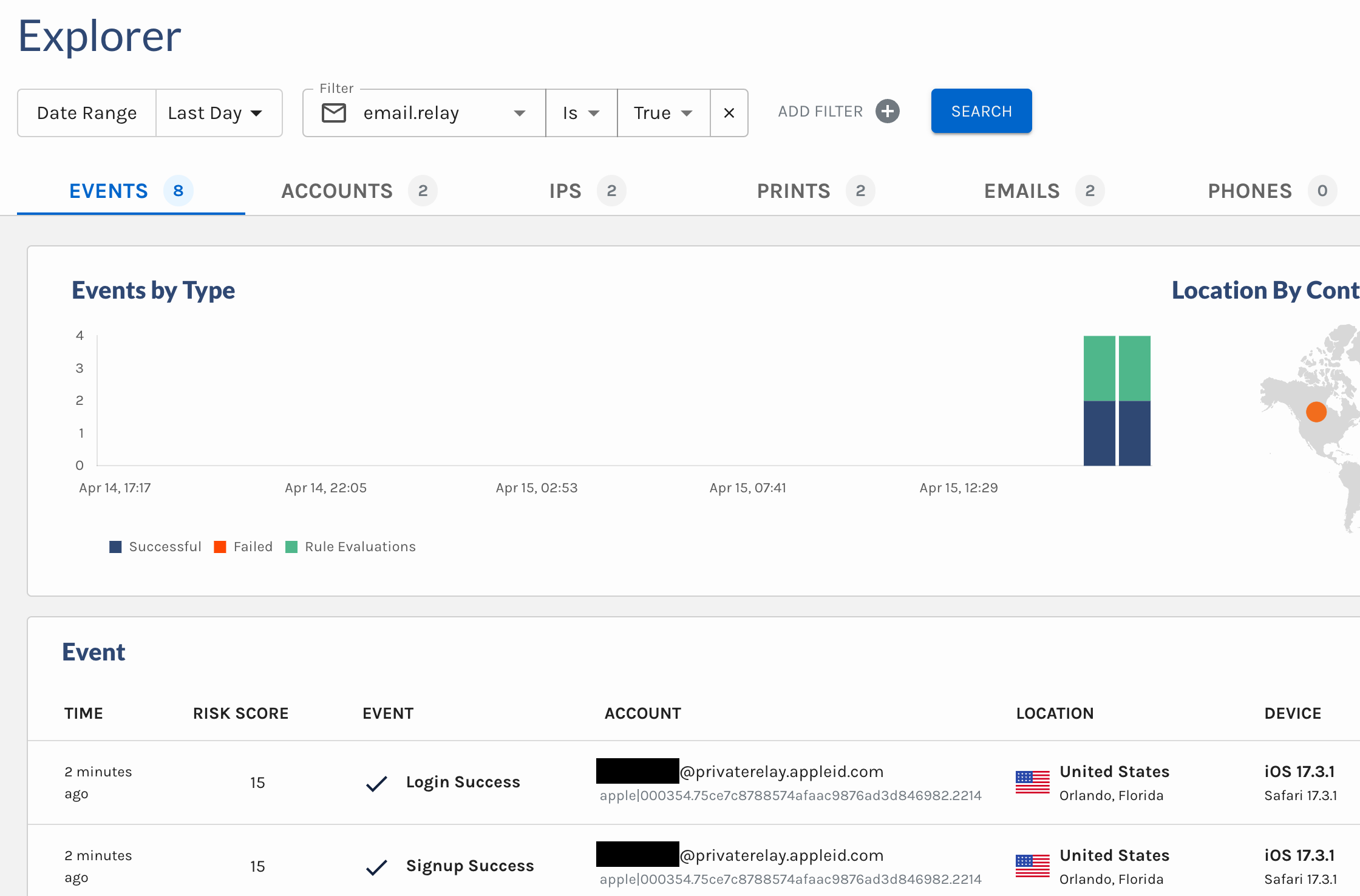
Example accounts using Apple Cloud+ as an email relay service in Explorer
🔔 New feature alert! We added an email.domain signal, which you can use to:
email.domainsignal in Explorer
Add Domains to Lists
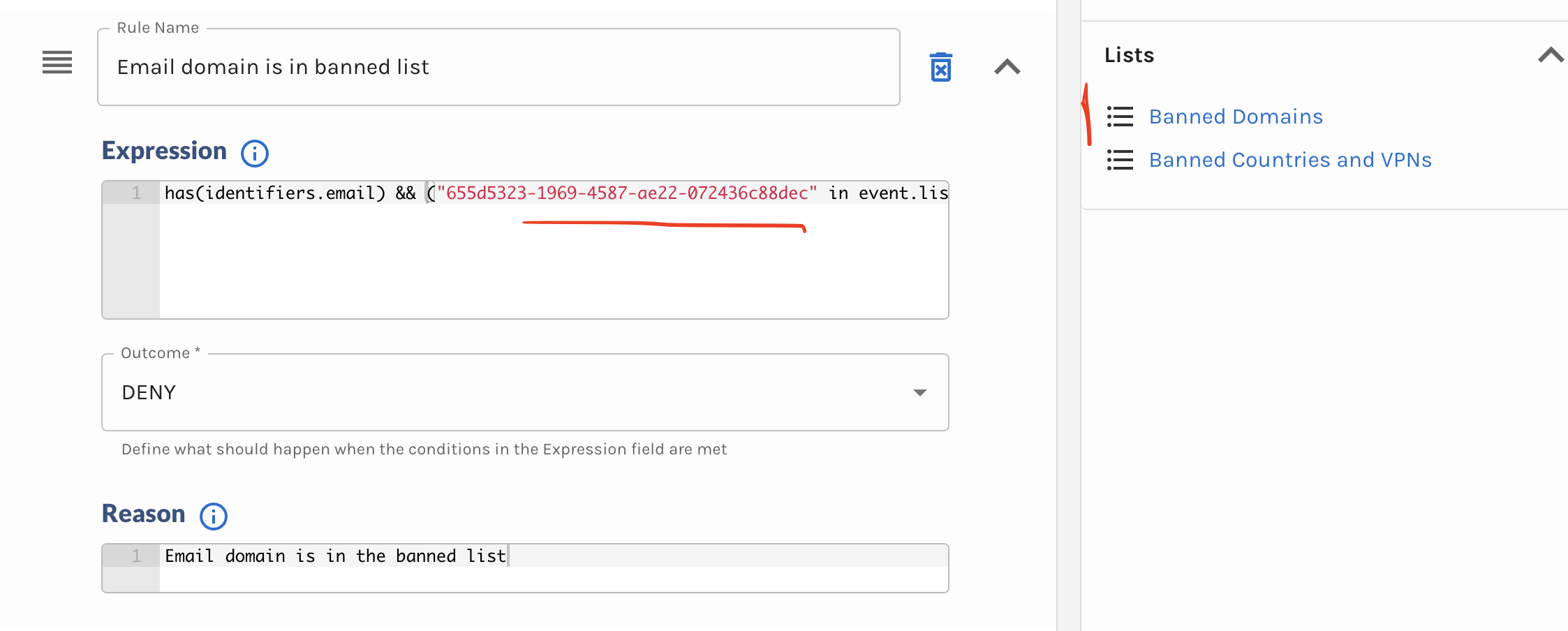
Use a "Banned Domain" list in Rules
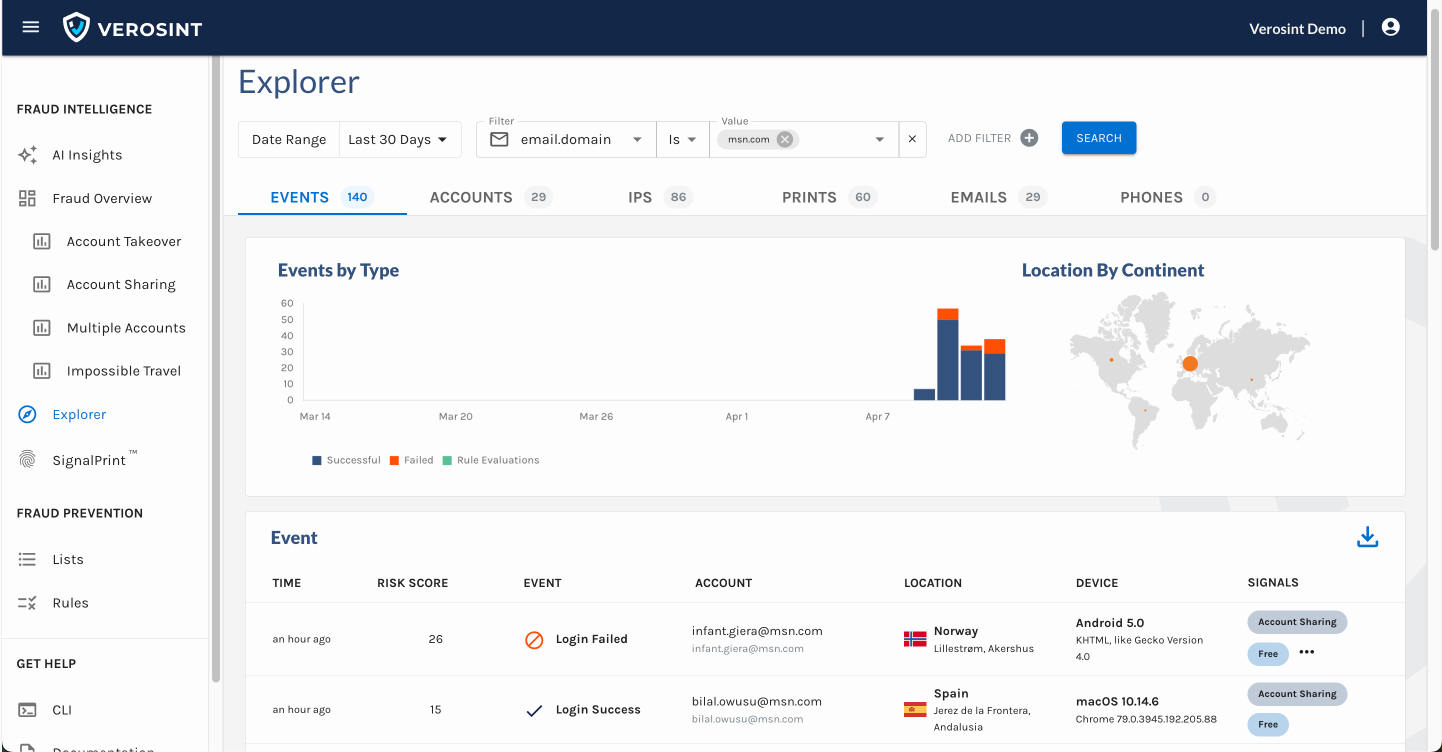
Search using the Domain signal in Explorer
🔨 We want to provide the best experience, so we're constantly fixing up the Verosint application.
If you (dis)like a particular AI-generated insight in your workspace ,you can give it a 👍 or 👎. We fixed this functionality so you can tell if you've already liked (or disliked 😁) an insight.
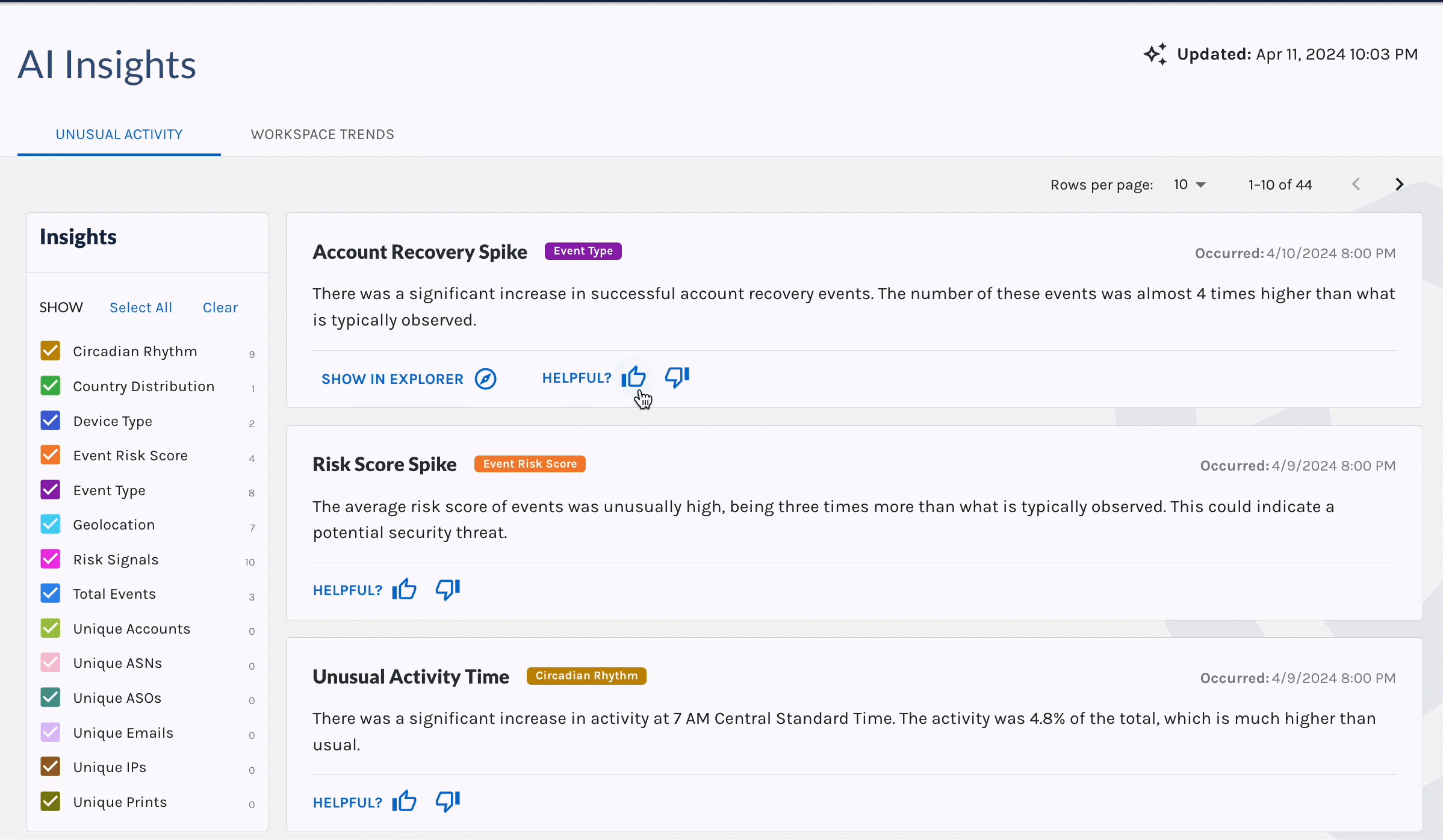
Now you know which AI-generated insights you've previously liked (or disliked)
💜 We're always looking to improve your experience.
We updated the look and feel of AI Insights, so that it's easier for you to digest a lot of info quickly and discern which insights you might care to dig deeper into.
The biggest change is that we added Insight Types to the AI Insights page, so you can quickly filter (out) the insights you care about.
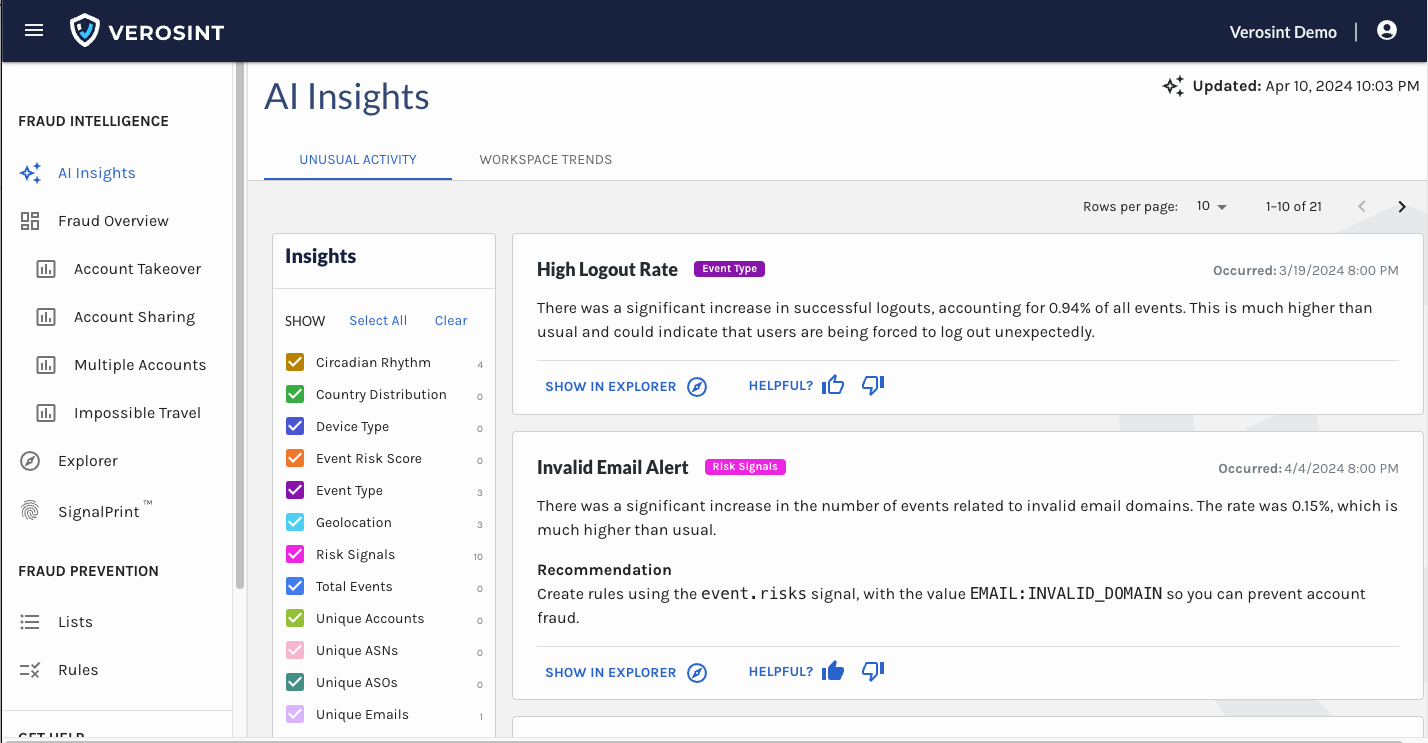
Check out the new look and feel of AI Insights
You can now search for empty Account IDs in Explorer, making it easier for you to discover when a potential stuffing attack or account takeover attempt may be occurring.
For example, a bad actor may attempt to log into your platform by trying a bunch of email usernames and passwords. If that email username does not exist in your platform, the Account ID will be empty when you search for it in Explorer.
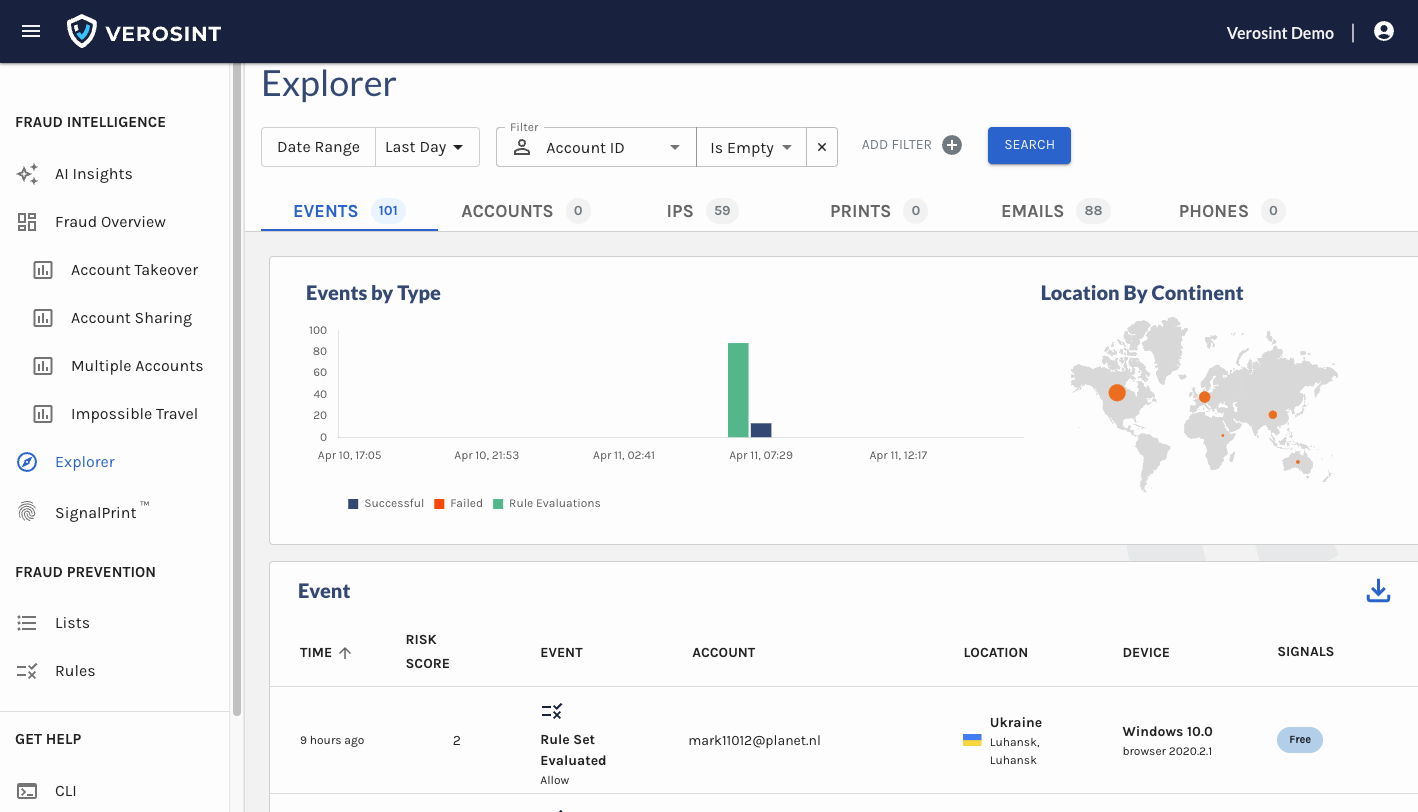
Notice the Account cell contains an Email, but no Account ID
🔨 We want to provide the best experience, so we're constantly fixing up the Verosint application.
validDomain signal = false when it shouldn't have been.Invalid Domain, so we fixed that too!💜 We're always looking to improve your experience.
Read-only users in a workspace can now download csv files from Explorer and export rule sets! You asked -- we delivered!
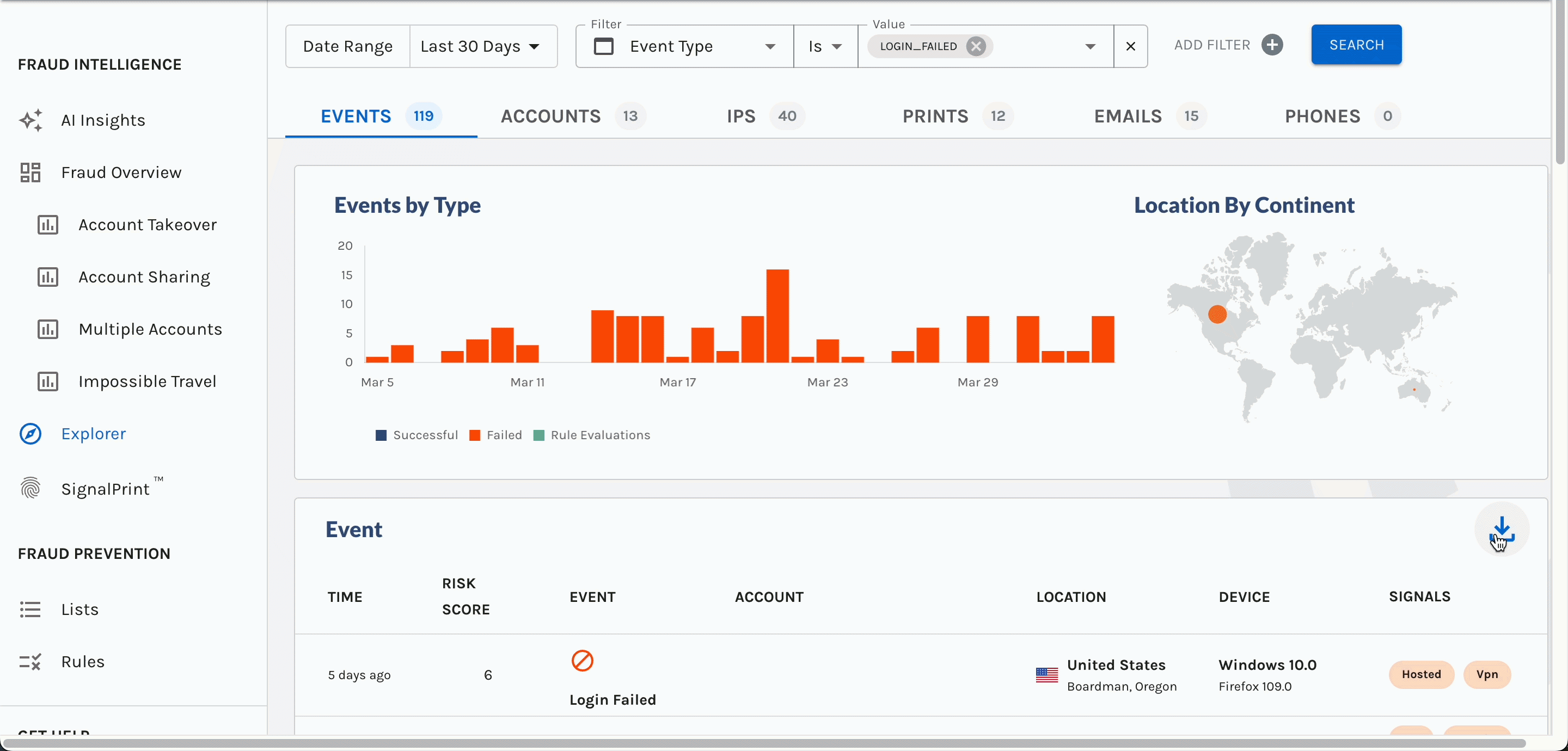
Read-only users can download csv of table results in Explorer

Read-only users can also download and share rule sets from Rules
🔨 We want to provide the best experience, so we're constantly fixing up the Verosint application.
We fixed a pesky bug that was duplicating filters when you used the click-to-filter functionality on the Location By Continent map in the Events tab of Explorer. All fixed!
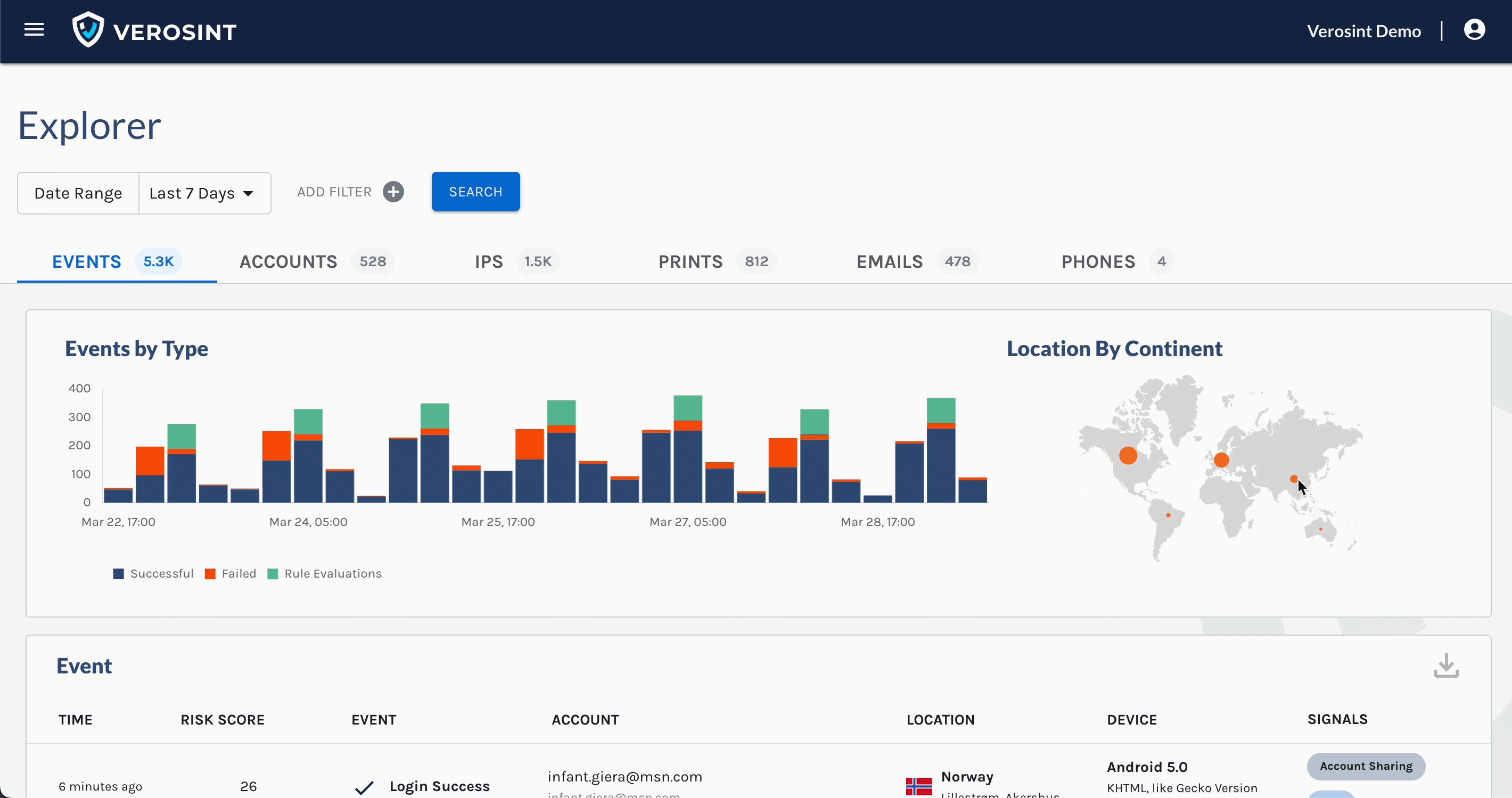
🔨 We want to provide the best experience, so we're constantly fixing up the Verosint application.
We squashed a bug that was preventing new Workspace Trends AI insights from being generated. 🪲 ✋ Check out the Workspace Trends for our Verosint Demo workspace here. These update daily!
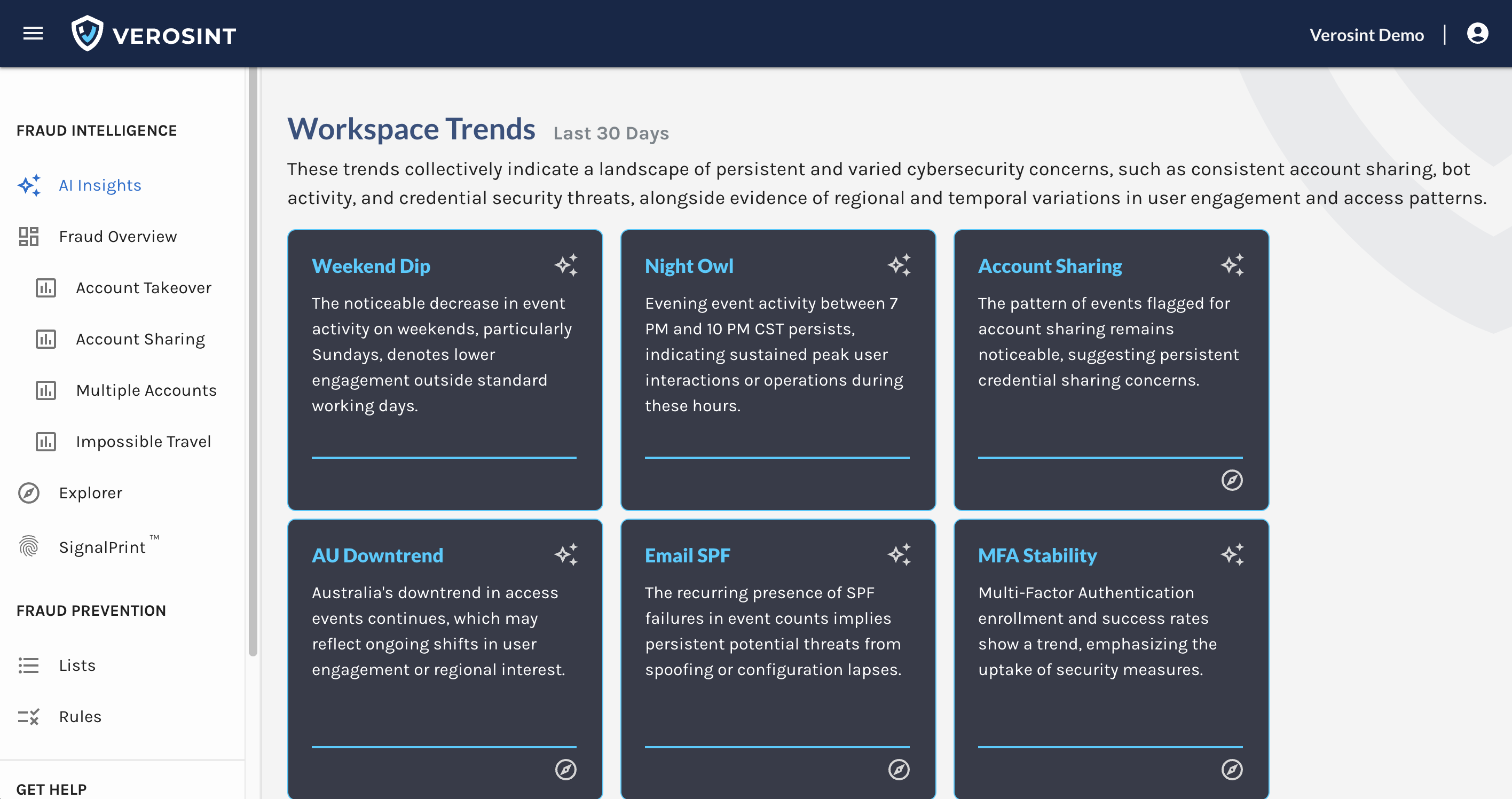
Workspace Trends in the Verosint Demo workspace - update daily!
We also squashed a bug that returned empty results when clicking on "Show in Explorer" from an AI insight card. We also ran into an issue where the correct search in Explorer was not being executed when clicking on the "Show in Explorer" button. That's all history now -- bugs squashed! 🐜 🐛 ✋
💜 We're always looking to improve your experience.
Our QA developer noticed that when you search for specific IP addresses in Explorer using the Starts With or Contains operators, Verosint returned the following error: 🔴 "Failed to query: error querying for events." 😕
To avoid this confusion, now we only allow the following operators -- is and isNot -- when you're searching for exact IP addresses in Explorer. You're welcome. 😄
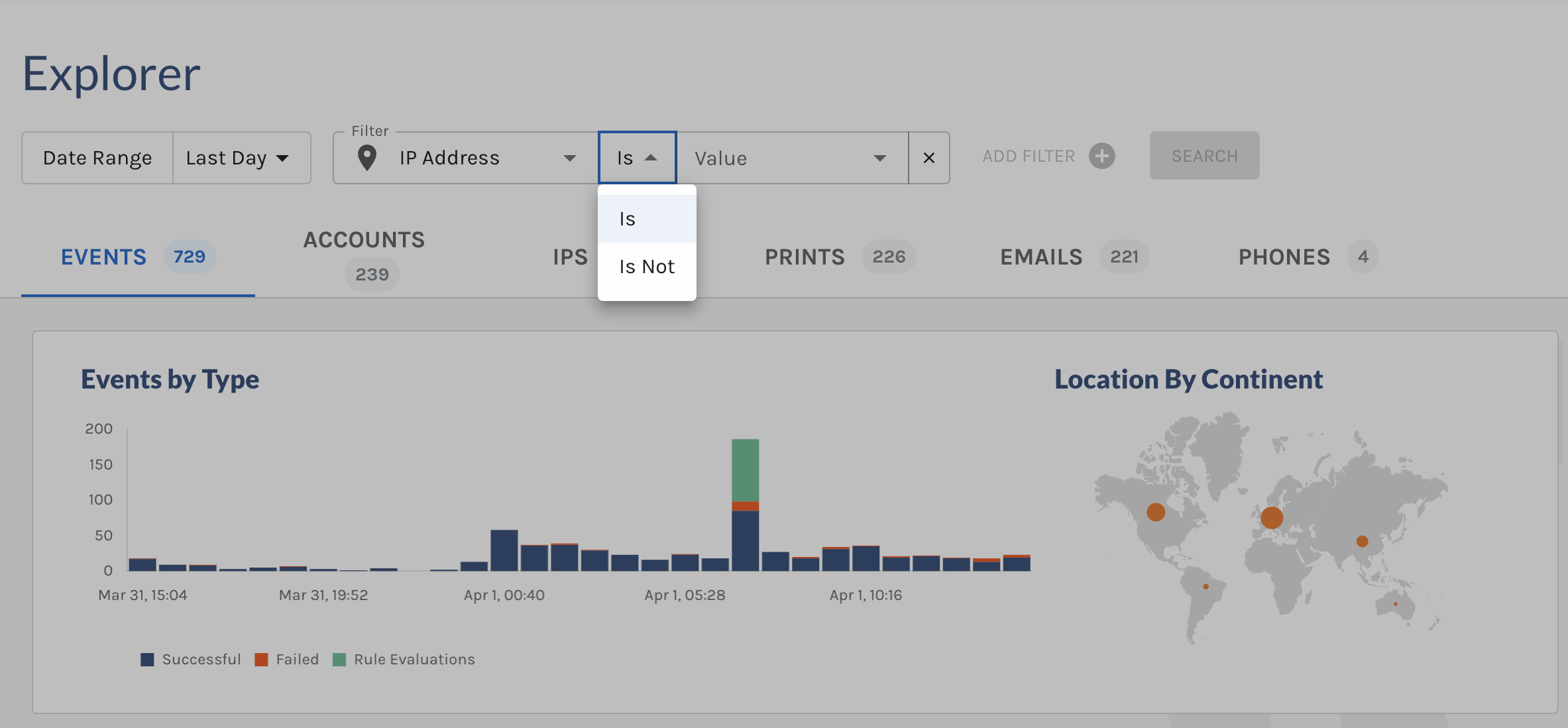
IP address searches in Explorer only supports Is or IsNot operators (which makes sense 😉).